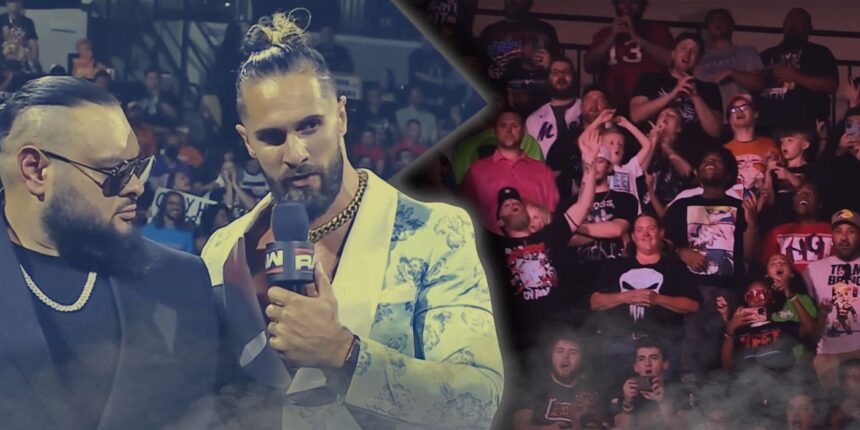Wrestling relies heavily on fan interaction to thrive. Evidence of this can be seen by looking back at moments when WWE or AEW held shows in empty arenas, silent crowds, or with artificial crowd noises, which all felt off. Some of wrestling’s greatest moments are fueled by live fan reactions. For example, Steve Austin’s entrance during the Attitude Era, or Dominik Mysterio becoming a standout heel because of the intense boos he received. Yet, fans can also be a challenge—they’re sometimes either too quiet, constantly shouting repetitive chants like “What?”, or their loud cursing forces networks like Netflix and USA to mute the audio during broadcasts.
In the Attitude Era, fans brought thousands of clever signs to WWE events, competing to get their messages on TV. Over time, these signs disappeared but have made a comeback recently, with WWE even encouraging them. Fans from international shows especially enjoy singing during Raw and Smackdown, though some find it distracting. The infamous “What?” chant, originally started by Steve Austin over 20 years ago, remains a staple—even the Undertaker has been met with it. While fans’ passionate reactions can enhance the experience, they sometimes cross the line into annoyance or vulgarity, particularly with chants involving explicit language.
In recent years, more adult-themed chants, including curses, have grown common—especially in AEW, where a slightly older audience reacts more vulgarly to heel wrestlers like MJF. This trend has spilled over to WWE. There have been instances where broadcasts on networks like USA and Fox suffered because the audience’s cursing was so prevalent that sound was cut out. Fans hoped WWE’s move to Netflix would reduce this problem, but recent episodes show it’s worsening. For example, during a Raw episode, the crowd’s vulgar chants directed at Seth Rollins were so loud that they had to be censored, and commentators’ remarks about it were removed from official clips.
WWE is now considering ways to change how fans react, possibly asking them to tone down swearing during shows, which are still rated TV-PG and attended by families with children. Wrestling journalist Dave Meltzer noted that while audiences in the past might have rebelled against such requests, today’s crowd might be mature enough to comply. If no changes are made, WWE could be forced to implement stricter controls on audience behavior. Although fans have matured in many aspects—no longer insulting female wrestlers with crude slurs—the prevalence of explicit chants can make watching at home uncomfortable for many viewers.
Fan Take: This discussion is crucial for WWE fans because the crowd’s energy deeply influences the atmosphere and storytelling of wrestling shows. Finding a balance between passionate fan participation and maintaining a family-friendly environment could shape the future of WWE’s live broadcasts and overall fan experience.













